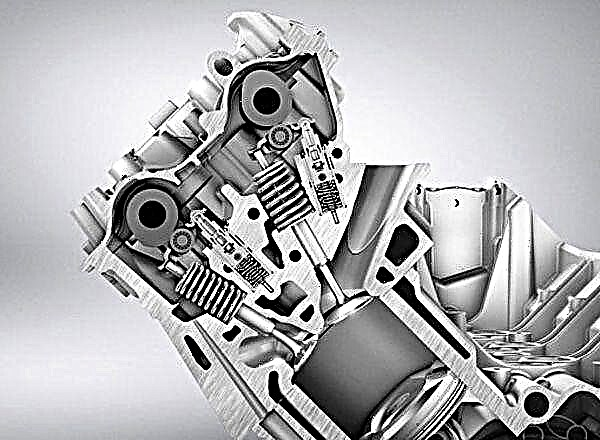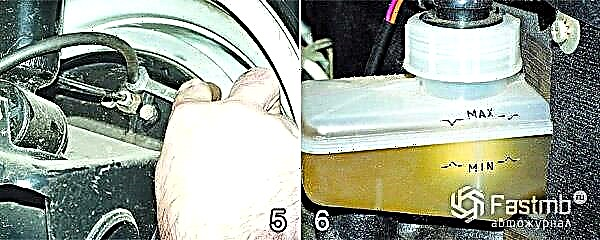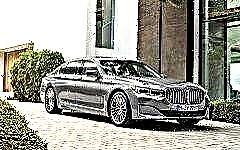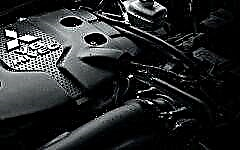

The content of the article:
- The emergence of the system
- Mechanisms and device
- The principle of operation and type of systems
- Cons and pros
Automotive automation and fuel economy are almost the most important areas in which many manufacturers operate. One example of fuel economy is the modern engine cylinder management system or also known as engine shutdown. Regardless of the name, the principle is fuel economy, but, like any mechanism, there are pros and cons.
How cylinder shut-off systems appeared

The old rule is that the larger the engine displacement and the higher the torque, the more horses under the hood, but, accordingly, it is gluttonous. These days, this pattern does not always work, and a small engine can be more voracious than a large engine. An example of fuel economy and emission reduction is considered to be a cylinder-aggregate control system.
The main purpose of the cylinder control system (ACC - Active Cylinder Control) is to change the working volume of the unit by turning off some of the cylinders during operation. According to preliminary data, fuel economy is about 20%, while harmful emissions along with exhaust gases are significantly reduced.

The reason for the development of a cylinder control system is the typical operating mode of the machine. Often, the maximum power of the unit is used up to 30-40% for the entire period of operation. This is the main indicator that the engine is always running at partial load. As a rule, the throttle flap is slightly open, the unit constantly draws in air for operation. As a result, we get pumping losses (idle operation), and further decrease in the efficiency of the unit.
Each manufacturer who implements this system develops or modifies existing mechanisms in its own way, naturally and calls the systems differently. But still, whatever you call it, the main principle of work and the purpose will be the same.
What is the cylinder control system

The cylinder control system works in most cases on multi-cylinder, powerful engines (usually 6, 8 or 12 cylinders). It is their work that is ineffective under light loads, especially when driving around the city.
The first mentions of the system were in 1981 on Cadillac cars. The mechanism was based on electromagnetic coils, which were installed on the rocker arms. The electronics were controlled by a special electronic unit. Due to the actuation, the rocker arms became stationary, and the valves remained closed due to the dead grip of the springs. As a rule, opposite pairs of engine cylinders were turned off in the cylinder head. In order to understand to the driver how many cylinders are working and whether they are in good working order, information was displayed on the dashboard. But the system did not receive widespread use, there were problems with fuel supply, as well as with shutdown.
Thus, a modern cylinder management system is based on at least three main components - the electronics, the control unit and the mechanical part that controls the cylinders.
How Engine Cylinder Shutdown Works

The name itself: turning off the cylinders, suggests that the mechanism will not be simple, since initially the unit is the heart of the machine. After a failed experiment in 1981, a modified cylinder management system was installed in Mercedes-Benz in 1999, called Active Cylinder Control (ACC). The valves of the cylinders were closed by a rocker arm of a special shape, it consisted of two levers, which are interconnected by clamps. In the working position, they were connected into one whole.
If it was necessary to disconnect the cylinder, the latches released the connection, and each of the rocker arms could move independently. It is worth noting that the valves were closed under the influence of the springs. Due to the oil pressure, the clamps moved, and the pressure is adjusted due to a special electromagnetic valve. As a result of such a complicated scheme, the fuel was no longer supplied to the cylinder.
Mercedes-Benz engineers not only improved the cylinder control system, but also came up with the idea that the characteristic sound of the exhaust system of a powerful engine does not change. To do this, when the cylinders are turned off, they installed an electronically controlled valve that can change the size of the exhaust path. Thus, shutting off the cylinders did not change the characteristic, harsh sound of the exhaust system.

The MDS (Multi-Displacement System) system has been more improved, it has been installed on Jeep, Dodge and Chrysler cars since 2004. The limits of operation of the cylinder control system are from 30 km / h, but when the crankshaft frequency does not exceed 3000 rpm. The MDS system is not simple enough, it uses a pusher with a special shape. If necessary, it ensures that the valve and camshaft are decoupled. The engineers calculated that at the right time, oil is supplied to the pusher under pressure, thereby squeezing out the locking pin. Thus, the pusher is removed from the operating state. The oil pressure is monitored and adjusted by means of a solenoid valve. The second system for disabling the cylinders of the unit from General Motors is Dod (Displacement on Demand), which is based on the previous system. Since 2004, the system has been installed on GM vehicles. Japanese engineers did not lag behind in development, in 2005 Honda began to use the VCM (Variable Cylinder Management) system. Typically, the system is installed on a V-shaped engine. During steady driving at low speed, the VCM system automatically deactivates one cylinder block (for example, 3 out of 6 available). If there is a transition from maximum load to incomplete, then the system leaves four cylinders out of 6 working.
VCM is based on the VTEC system. The main parts are rocker arms that work in tandem with cams of different shapes. If necessary, the rocker arms are turned off or turned on due to the locking mechanism of the latches. In order to improve engine performance, the pair have developed AEM (Active Engine Mounts) systems, which regulate the amount of engine vibration. ASC (Active Sound Control) system - designed for noise reduction, will get rid of unwanted noise in the car.

Progress did not stop at a place and Volkswagen made its own amendments by developing the ACT (Active Cylinder Technology) system in 2012. The target for the installation of the 1.4 liter TSI engine steel. The engine cylinder control operates between 1400 and 4000 rpm, disabling two of the four cylinders. Part of the ACT system design has migrated to Audi cars, to the valve timing technology Valvelift System. For work, cams of different shapes are used, all, without exception, are located on a sliding clutch along the camshaft.
The clutch and cams form the so-called block of cams, there are four blocks in the engine, two on the exhaust shaft and two on the intake. The cam blocks are controlled by four actuators. To move the blocks, a rod is used that slides along the spiraling groove of the main block. All change commands are transmitted from the engine control unit.
As you can see, the superficially described system is actually much more complicated. Fuel economy with the presence of an engine cylinder control system is significantly noticeable, but the cost of such engines is much higher.
Pros and cons of the cylinder control system

As with any mechanism, the engine cylinder management system has its pros and cons.Undoubtedly, fuel economy and less engine wear are considered a plus. But on the other hand, this is an additional load on the engine, unwanted noise and vibration.
In order to avoid loads on the unit, exhaust gases remain in the disconnected pistons that remain from previous operating moments. Thus, the gases are compressed during the operation of the piston and press against the piston when it moves downward. Through this cycle, the pressure and power are equalized. But still, the slightest defect in the alloy can lead to the most unexpected consequences, therefore, during the repair, it is necessary to install only original parts and carry out repairs at specialized, branded service stations.
In addition to engine loads, vibration also increases due to uneven ignition of fuel in the engine. The engineers decided to install special engine mounts based on hydraulics and a dual-mass flywheel. The suppression of noise and vibration occurs in the exhaust system, for this purpose pipes of a special length are selected, two mufflers are used, the usual rear and another front muffler, paired with resonators of different sizes.
On modern cars, an engine cylinder control system is installed, but still leaves the right to choose for the buyer, whether he needs it or not. Since the main thing is not the availability, but the future of its service. The price for repairing such an engine is twice as high as for an analogue without a system.
System operation on a Honda Accord:
Operation of the ACT system on Volkswagen engines:











